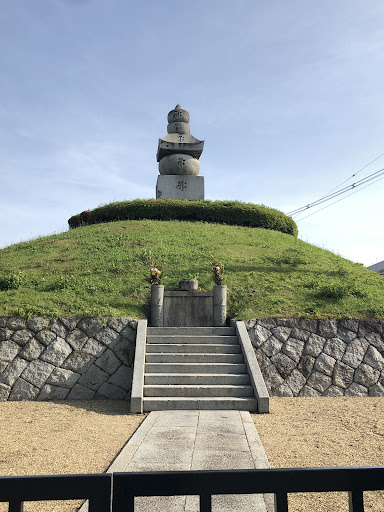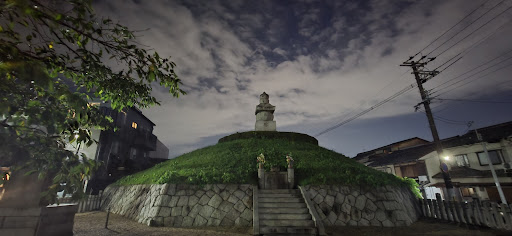May 20, 2023 visit (Updated because “Food Fanatic” wanted to throw shade at me personally) Oblivious? You’re the one using political buzzwords like genocide to describe a conflict 400 years ago. I’m Catholic and thousands of Catholics were martyred by Hideyoshi and the Tokugawa and later by feudal Korea. You don’t see me whining about it and calling the current people of Korea and Japan genocide supporters now and forever. I gave a review of the temple up the street that deifies Hideyoshi 2 stars because of what he did to Christians and the Koreans. But holding hatred in your heart for an event 4 centuries ago benefits no one and only drags on. Seriously this is not a hard concept to grasp. I lived along side Japanese and Korean people for over a year and they’re some of nicest and friendliest people I know. You’re accusations against them is baseless. Grow up…) During the Imjin War, Japanese soldier took the noses of 38,000 Korean and 30,000 Chinese that were killed. The remains are enshrined here. I am neither Korean or Japanese, so I approach this controversial place with neutrality. It’s a historical monument with the remains of people who are long dead. Joseon and Feudal Japan no longer exist. Try to look at this place as a reminder of history and not as a 400...
Read more「耳塚(鼻塚)」 この塚は、16世紀末、天下を統一した豊臣秀吉がさらに大陸にも支配の手を伸ばそうとして、朝鮮半島に侵攻したいわゆる文禄・慶長の役(朝鮮史では、壬辰・丁酉の倭乱、1592~1598)にかかる遺跡である。 秀吉配下の武将は、古来一般の戦功のしるしである首級のかわりに、朝鮮軍民男女の鼻や耳をそぎ、塩漬けにして日本へ持ち帰った。それらは秀吉の命によりこの地に埋められ、供養の儀がもたれたという。これが伝えられる「耳塚(鼻塚)」のはじまりである。 「耳塚(鼻塚)」は、史跡「御土居」などとともに京都に現存する豊臣秀吉の遺構の一つであり、塚の上に建つ五輪の石塔は、その形状がすでに寛永2年(1643)の古絵図にみとめられ、塚の築成から程ないころの創建と思われる。 秀吉が惹き起こしたこの戦争は、朝鮮半島における人々の根強い抵抗によって敗退に終わったが、戦役が遺したこの「耳塚(鼻塚)」は、戦乱下に被った朝鮮民衆の受難を、歴史の遺訓として。いまに伝えている。 京都市 "Ear Mound (Nose Mound)" This mound is a ruin related to the Bunroku-Keicho War (known in Korean history as the Imjin-Jeongyou War, 1592-1598), when Toyotomi Hideyoshi, who had unified Japan at the end of the 16th century, invaded the Korean Peninsula in an attempt to extend his rule to the continent. Instead of the traditional heads that have been a common sign of military achievement since ancient times, Hideyoshi's military commanders cut off the noses and ears of Korean military and civilian men and women, pickled them, and brought them back to Japan. By order of Hideyoshi, they were buried here and a memorial service was held. This is the origin of the so-called "Ear Mound (Nose Mound)". The "Mimizuka (Hosezuka)" is one of Toyotomi Hideyoshi's remains that still remain in Kyoto, along with the historic site "Odoi," and the shape of the five-ringed stone tower that stands on top of the mound was already recognized in an old drawing from 1643, and it is thought to have been built shortly after the construction of the mound. The war that Hideyoshi instigated ended in defeat due to the persistent resistance of the people of the Korean Peninsula, but the "Mimizuka (Hosezuka)" left behind by the campaign continues to convey to us today as a historical lesson the suffering that the Korean people suffered...
Read moreA quiet monument located in a creepy sleepy town. It is not a monument of great achievement but a monument of how someone cannot sleep well at night and needed the Buddhist monks help to pacify the Korean and Chinese victims. That’s why the monument was built in the first place. A unifier of Japan yes but at the sacrifice of...
Read more


